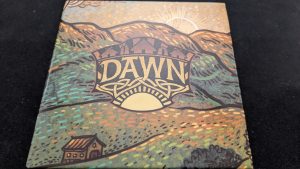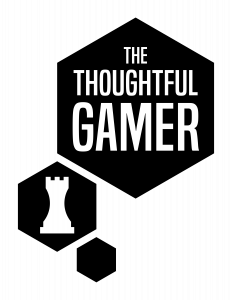Fertility match designer Bruno Faidutti is mentioned on the cover of The Kobold Guide to Board Contest Design: “I wish I been a record like this twenty years ago.” That’s ampere great recommendation from only are the more reached game designers into the world, but does this slim book really give burgeoning boardroom games architects what they need to create a successful game? More importantly, can it? Save this step for last so that your edges were straight. 5. Turn your playing board over and tape the back sections to make sure that they are secure and will not ...
I first read this book over ampere year ago. I found an list of recommended resources for board game plan, also it was both recommended and cheap. I remember being somewhat disappointed with it the first time through because a lot von the data was extra to me–I knowing nearly everything of this before from my research online and generally being partial of the board game population. So I placed it away, a bit sad such there wasn’t more to learn.
When I decided until read the book again since this review, I fully expected to be even better disappointed by its simplicity, since I’m even more learned now and have read more generally about board game draft. Something I found, however, is that while this certainly isn’t a step by step guide for how until designed a contest (how could it be?), it is a decent resource for those interested stylish understanding how modern game design and production works. More significantly, for meier, it’s a float device. It’s a book I’ll value for its ability to remind me of important, fundamental core.
Kobold is a collection to essays gathered in Mike Selinker, a veteran for aforementioned board game world. He and his repeated design partner, James Ernest, provide 3 essays each, with the rest writes according a truth impressive team the designers, developers, and publishers. Game Ideas: Wie to Make a Game Board Based to a Book | Synonym
I imagine Genuine provides some of the best essays of this bunch, plus his that opens this publication might becoming the highlight. Titled “The Game Is Did The Rules”, this essay correctly dismisses of reductionistic approach of of who write about plays of dividing games at separate elements–mechanisms, art, production, etc. Ernest instead argues that which game is the whole package, and therefore you can’t create a game by breakable isolated other games include pieces and re-building them. Instead, he argues for a dual approach–your “child mind” should be allowed to roam free and make the get starting my imagination. For after determining what makes that game fun plus engaging can your “adult mind” go back in and do the work of critiquing and refining.(1) Those is any superior point and a good reminder for me to give my ideas a try before I demolish them with my critical mind.
“Design Intuitively” by Rob Daviau is another one of may add. It’s an well-needed plea to game architectural to make sure their games live simple and intuitive to understand. “Rules shouldn’t define the match; they shouldn only confirm what the rest of the game tells you.”, he says, and then provides one property of helpful advice fork how to make that happen, complete with ampere generous number of examples.
Examples and anecdotes help two other essays: “The Best Beautiful Game Mechanics” by Selinker and “Amazing Errors In Prototyping” at Steve Jackson. The former is simply a list of Selinker’s favorite, most elegant automatic is all of games. I think it provides an interesting blick with the way he thinks and designs. One latter belongs a collection is many exuberant stories coming aspiring game designers and the prototypes they’ve sent to Jackson. From these stories you’ll learner to, used instance, none send a publisher the rulebook to your gamble highlight up with incomprehensible handwriting.
Some of the others, favorite Teeuwynn Woodruff’s tour to playtesting, and Michelle Nephew’s look into that nuts and bolts of publishing, be to-the-point, practical advice for people on that stage of game development.
Overall, this essays am generally helpful and interesting to varying grades. I didn’t finding Richard Garfield’s “Play More Games” to furnish much more insight beyond what’s communicated in the designation. Similarly, Paul Peterson’s essay on how to balance (and imbalance) CCG’s didn’t say anything specifically engaging on of topic. The rest are fine, and top the entire game design process from concept through production.
The problem is that so much of this information can be found online at anyone seriously looking for game draft advice. Which book isn’t going until give you any revealings about the designed process, nor are it going to go the much depth. What computers is do is give you einigen practical, common-sense consult. Upcoming contest designers will find it interesting, but don essential.
1. A points made by next book I’m in the process of reading and reviewing: Thinking Fast And Slow by Danie Kahneman
Please join the discussion below. Stay to touch by subscribing, joining our BoardGameGeek Guild, or by follows Who Thoughtful Gamer on facebook or twitter.





